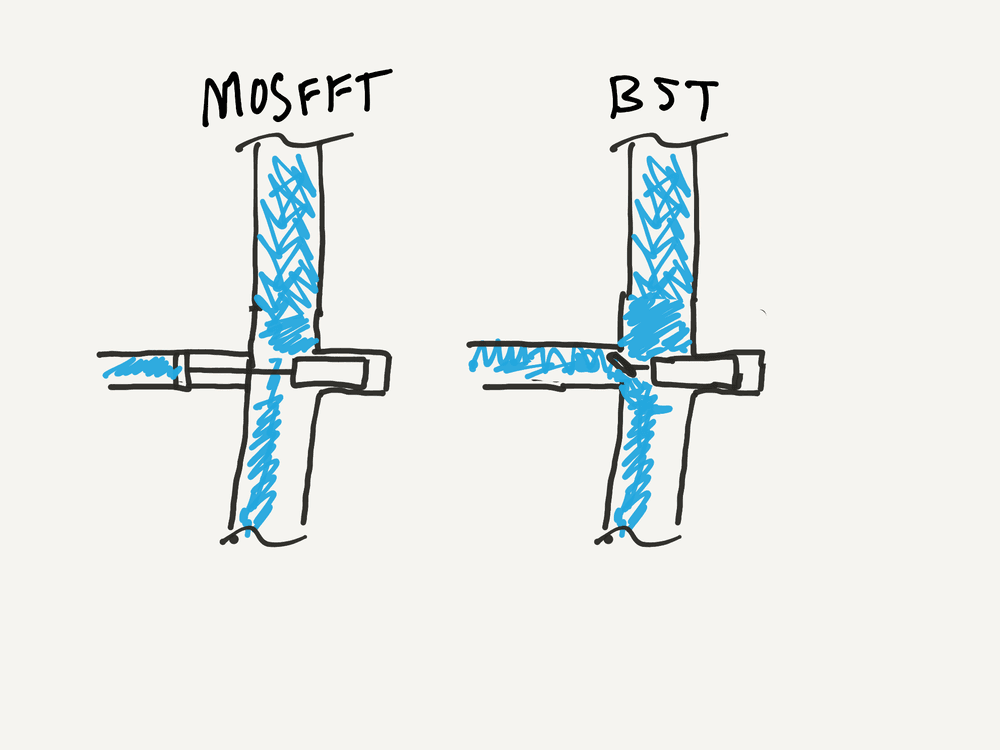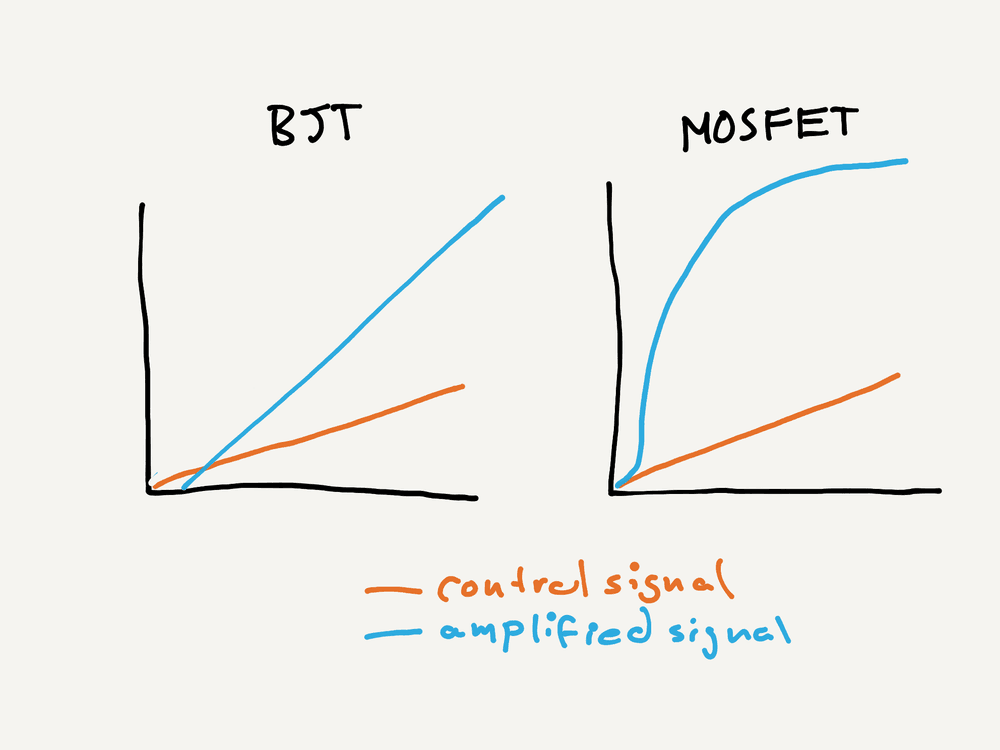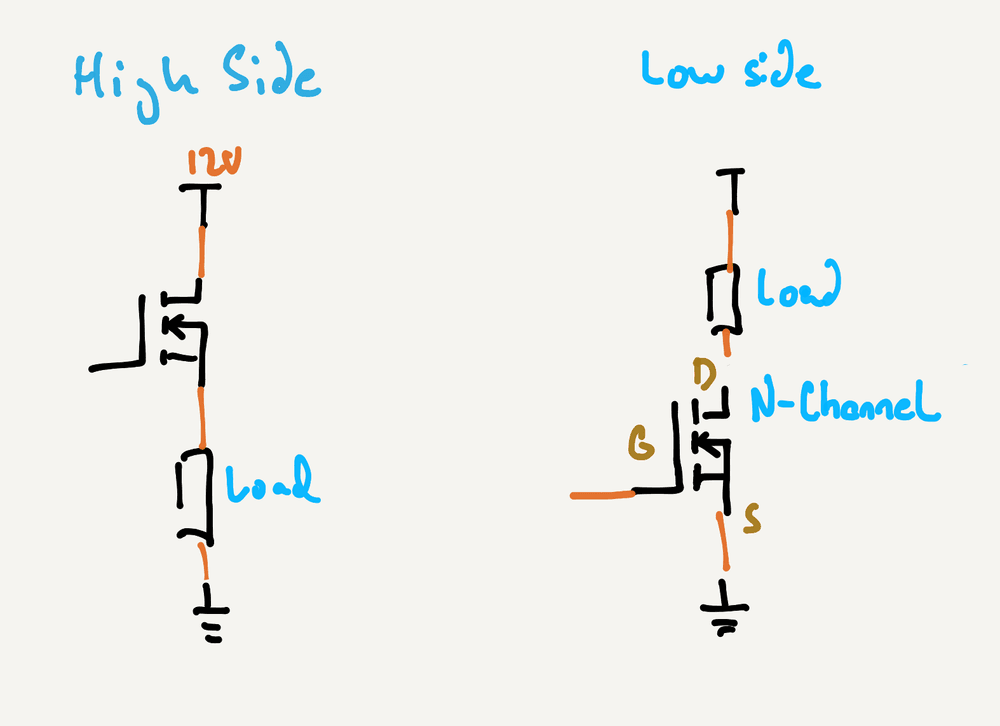Transistors
Intro
There is probably no singular component in electronics that is more important, or more prevalent in electronics than the transistor.
MOSFETs vs. BJTs
While Wikipedia lists 52 different types of transistors, the two most common types of transistors used in modern digital circuits, MOSFETs, and BJTs.
- MOSFET = Metal-Oxide Semiconductor Field-Effect Transistor
- BJT = Bipolar Junction Transistor
MOSFETs are voltage devices.

MOSFETs operate on voltage, meaning that they act like a pressure switch, as voltage is applied, it controls the valve.
BJTs on the other hand, operate on current, meaning that while voltage is applied to the gate to control curret flow, it actually uses the current through the gate!
This means that MOSFETs are much more power efficent.
MOSFETS handle large current loads better.
Due to the way they work, they're also far better at handling larger current loads while wasting less energy as heat. As such; when working with larger current loads, you'll almost always want to use a MOSFET.
Operation
One of the interesting behaviors of transistors is that they can act both as an electronic switch, and as a signal amplifier.
As a Logical Switch
Most often, we use transistors to digitally switch (logical ON/OFF) higher current or voltage loads with a smaller controlling current or voltage. For instance, if we wanted to control a 6V DC motor using a 3.3V digital output on a Meadow board, we could use a transistor circuit that acts a sort of digital "switch" to allow 6V from an external source to flow through the motor:
As an Amplifier
If you apply an intermediary amount of voltage, you can control how much current is let through. This pattern of usage is called signal amplification because you're typically using a smaller signal (the controlling voltage to the gate) to control a large signal (the current between source and drain). So for instance, not only can you switch ON a DC motor, but you could potentially set it to 60% power.
In this regard, BJTs are actually better for traditional analog circuit amplifiers because their control signal to switching behavior is linear, whereas MOSFETs have a logarithmic behavior, making it more difficult to have fine-grain control over the amplification.

Low-Side vs. High-Side
When using transistors, they are place on either the HIGH side or the LOW side of the load they're controlling. If the switch is on side that is closer to the higher voltage, it's said to be on the HIGH side, and if it's closer to the lower voltage (typically GND), then it's on the LOW side:

